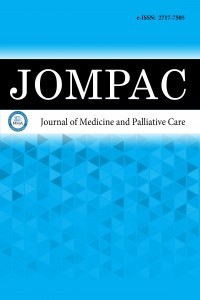1.
Pulimood TB, Park GR. Debate: albumin administration should be avoided in the critically ill. <em>Crit Care</em> 2000;4(3):151-155.
2.
Sudlow G, Birkett DJ, Wade DN. The characterization of two specific drug binding sites on human serum albumin. <em>Mol Pharmacol.</em> 1975;11(6):824-832.
3.
Gibbs J, Cull W, Henderson W, Daley J, Hur K, Khuri SF. Preoperative serum albumin level as a predictor of operative mortality and morbidity: results from the National VA Surgical Risk Study. <em>Arch Surg.</em> 1999;134(1):36-42.
4.
Levitt DG, Levitt MD. Human serum albumin homeostasis: a new look at the roles of synthesis, catabolism, renal and gastrointestinal excretion, and the clinical value of serum albumin measurements. <em>Int J Gen Med.</em> 2016;9:229-255.
5.
Peters Jr T. All About Albumin: Biochemistry, Genetics, and Medical Applications. San Diego, CA: Academic Press: 1996.
6.
Moshage HJ, Janssen JA, Franssen JH, Hafkenscheid JC, Yap SH. Study of the molecular mechanism of decreased liver synthesis of albumin in inflammation. <em>J Clin Invest.</em> 1987;79(6):1635-1641.
7.
Brenner DA, Buck M, Feitelberg SP, Chojkier M. Tumor necrosis factor-alpha inhibits albumin gene expression in a murine model of cachexia. <em>J Clin Invest.</em> 1990;85(1):248-255.
8.
Bein T, Unertl K. Möglichkeiten und Grenzen von Score-Systemen in der Intensivmedizin [Potentialities and limitations of the score system in intensive medicine].<em>Anasthesiol Intensivmed Notfallmed Schmerzther</em>. 1993;28(8):476-483.
9.
Mutchmore A, Lamontagne F, Chassé M, Moore L, Mayette M. Automated APACHE II and SOFA score calculation using real-world electronic medical record data in a single center. <em>J Clin Monit Comput.</em> 2023;37(4):1023-1033.
10.
Britt RC, Devine A, Swallen KC, et al. Corticosteroid use in the intensive care unit: at what cost? <em>Arch Surg.</em> 2006;141(2):145-149.
11.
Corwin HL, Gettinger A, Pearl RG, et al. The CRIT study: anemia and blood transfusion in the critically ill--current clinical practice in the United States. <em>Crit Care Med.</em> 2004;32(1):39-52.
12.
Ning S, Liu Y, Barty R, et al. The association between platelet transfusions and mortality in patients with critical illness. <em>Transfusion.</em> 2019;59(6):1962-1970.
13.
Takegawa R, Kabata D, Shimizu K, et al. Serum albumin as a risk factor for death in patients with prolonged sepsis: an observational study. <em>J Crit Care.</em> 2019;51:139-144.
14.
Tai H, Zhu Z, Mei H, Sun W, Zhang W. Albumin-to-fibrinogen ratio independently predicts 28-day mortality in patients with peritonitis-induced sepsis. <em>Mediators Inflamm</em>. 2020;2020:7280708. doi: 10.1155/2020/7280708
15.
Han T, Cheng T, Liao Y, et al. Analysis of the value of the blood urea nitrogen to albumin ratio as a predictor of mortality in patients with sepsis. <em>J Inflamm Res.</em> 2022;15:1227.
16.
Kim MH, Ahn JY, Song JE, et al. The C-reactive protein/albumin ratio as an independent predictor of mortality in patients with severe sepsis or septic shock treated with early goal-directed therapy. <em>PLoS One</em>. 2015;10(7):e0132109. doi: 10.1371/journal.pone.0132109
17.
Fleck A, Hawker F, Wallace PI, et al. Increased vascular permeability: a major cause of hypoalbuminaemia in disease and injury. <em>Lancet.</em> 1985;1(8432):781-784.
18.
Cao Y, Su Y, Guo C, He L, Ding N. Albumin level is associated with short-term and long-term outcomes in sepsis patients admitted in the ICU: a large public database retrospective research. <em>Clin Epidemiol.</em> 2023;15:263-273.
19.
McCluskey A, Thomas AN, Bowles BJM, Kishen R. The prognostic value of serial measurements of serum albumin concentration in patients admitted to an intensive care unit.<em>Anaesthesia</em>,1996;51(8):724-727.
20.
Kendall H, Abreu E, Cheng AL. Serum albumin trend is a predictor of mortality in ICU patients with sepsis. <em>Biol Res Nurs.</em> 2019;21(3):237-244.
21.
Jin X, Li J, Sun L, et al. Prognostic value of serum albumin level in critically ill patients: observational data from large intensive care unit databases. <em>Front Nutr.</em> 2022;9:770674.
22.
China L, Freemantle N, Forrest E, et al. A randomized trial of albumin infusions in hospitalized patients with cirrhosis. <em>N Engl J Med.</em> 2021;384(9):808-817.
23.
Nicholson JP, Wolmarans MR, Park GR. The role of albumin in critical illness. <em>Br J Anaesth.</em> 2000;85(4):599-610.
24.
Cochrane Injuries Group Albumin Reviewers. Human albumin administration in critically ill patients: systematic review of randomised controlled trials. <em>BMJ.</em> 1998;317(7153):235-240.
25.
Vincent JL, Russell JA, Jacob M, et al. Albumin administration in the acutely ill: what is new and where next? <em>Crit Care.</em> 2014;18(4):231. doi: 10.1186/cc13991

